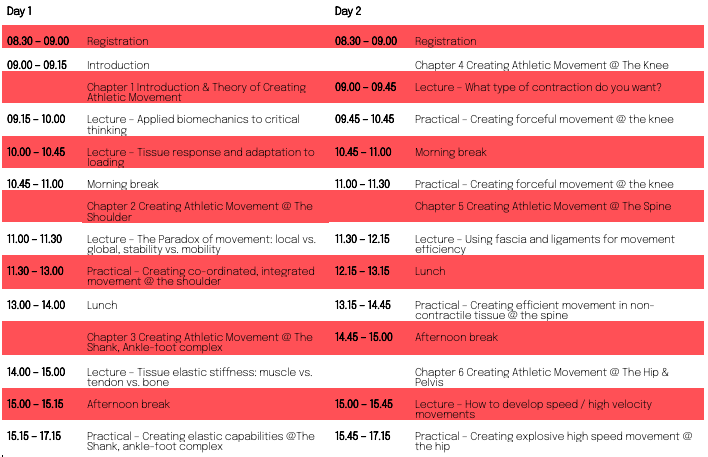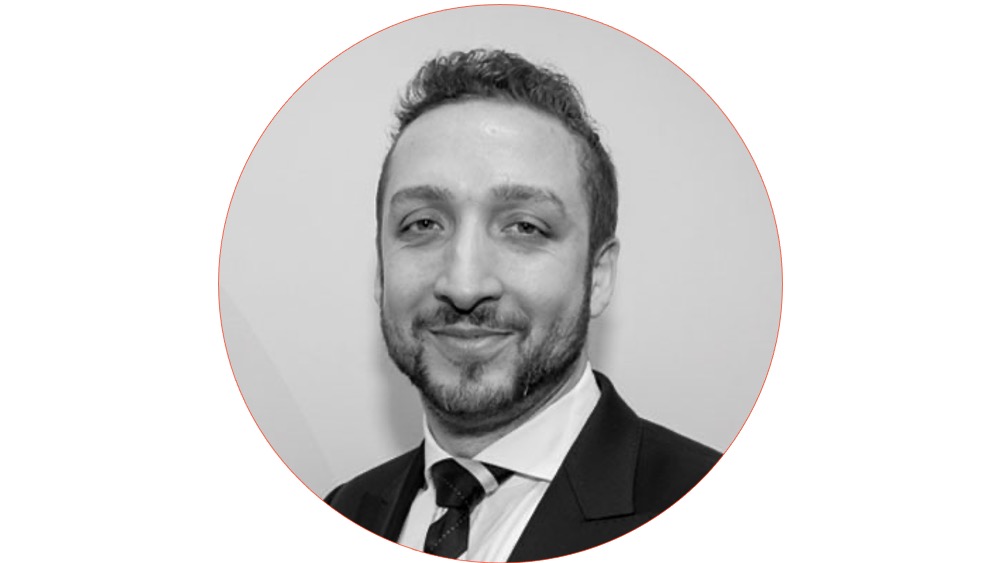Creating athletic movement
The human body is a highly complex system, and when it comes to movement that is no exception. It requires the careful and precise coordination of a variety of different tissues and their interaction with joints, all of which is regulated by the nervous system. We regularly observe movement and make assessments based on those observations, however, what we do not always know is why we move in certain ways?
Description
Taal scholing: Engels - Geaccrediteerd voor het beroepsgerelateerd deel en het algemeen & sport register - Keurmerk: 14 punten - KRF: 13 punten - ProQKine: 24 NE
Wij doen ons uiterste best om onze scholingen in deze tijd door te laten gaan volgens nationale en internationale richtlijnen rondom COVID-19. Mocht er iets veranderen voor deze scholing, dan brengen we je zo snel mogelijk op de hoogte.
Loading strategies for healthy & injured tissue to enhance adaptation
The human body is a highly complex system, and when it comes to movement that is no exception. It requires the careful and precise coordination of a variety of different tissues and their interaction with joints, all of which is regulated by the nervous system. We regularly observe movement and make assessments based on those observations, however, what we do not always know is why we move in certain ways? The human body is a highly complex and adaptive system. This complexity is compounded during movement which requires the careful and precise coordination of a variety of different tissues that interact with joints, all of which is regulated by the nervous system. We regularly observe movement and make assessments based on those observations, however, we are not always able to answer a fundamental question: why do we move in certain ways?
This course will begin to explore the laws of physics around movement, and how different tissues help to regulate that movement. It will go on to explore the immediate response of all tissues (muscles, ligaments, tendons, bone, fascia and joints) to a stressful stimulus, and whether that adaptation will be a positive one or a negative. Rather than focussing on which exercise to do for an injury or problem, the course will improve the candidates ability to understand and make decisions on what change (adaptation) they are trying to get in the subject / patient, and therefore what are all the options available to get that response.
The course will cover all major regions in the body from shoulder, to spinal, to hip & pelvis, knee, and finally ankle-foot. At each region we will explore function in a healthy state and what happens in a pathological state. At each region it will cover a specific principle and look at the best ways to get a positive adaptation at that region. However, every principle explored can be transferred to all the regions and preliminary examples of that will be discussed. The participants, will leave with a clear understanding of the underlying principles of movement and how physics and neurophysiology can interact; they will have a great understanding of when applying an exercise stimulus how to enhance the desired adaptation at that tissue or region; finally, they will leave with key principles that can be applied to all the regions explored.
This is a new course to be established in the UK and Europe in 2019. The course will integrate the theoretical science and research based evidence into bite sized practical application for movement and exercise prescription. It will also draw upon our experiences of working with elite athletes through The English Institute of Sport, UK Athletics, England Rugby, Saracens Rugby, British Triathlon, National teams, The British Olympic Association at various Olympic Games and through the Intensive Rehabilitation Unit for Team GB. Our aim is to provide a platform for effective critical thinking and piece together a framework for good decision making on the application of exercise and load when treating the whole body. We hope you enjoy Biotensegrity – Loading strategies for tissue and movement to enhance adaptation.
Timetable

Spreker
Specialist
 Lees hier alles over James Moore!
Lees hier alles over James Moore!